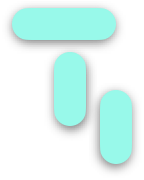

The Thematic progression patterns in your text are summarized in this tab.
Thematic progression shows how you develop your text from sentence to sentence.
Elements from one theme or rheme are repeated or rephrased in sentences that follow.
Thematic progression allows us to trace those elements throughout the text and
thereby the underlying logic being developed from sentence to sentence.
Thematizer considers the following thematic progression patterns when analyzing the text:
Note that you can select multiple documents to compare their thematic progression frequencies in the graph.
Only the first text from the documents you choose will appear with highlights below, however.
Finally, it should be noted that Thematizer's current accuracy rate for parsing thematic progression is approximately
85.0%; therefore, please be aware that parsing errors will likely be present, particularly where paraphrase (lexical entailment) and coreference
resolution are concerned.

This program, Thematizer, takes in a text and outputs the theme, rheme and thematic progression patterns of each sentence through thematic constituent analysis. A theme is all the words before the main verb of the sentence whereas a rheme is everyting including and after the main verb. A theme can also be subcategorized into a so-called marked theme, which is commonly realized as an adverb or prepositional phrase at the beginning of a sentence. For example, a marked theme could be "in the past", "however" or "after that." The output of every marked theme, theme, and rheme from the text is presented in the first results tab. In the second tab, the marked theme distribution and semantic classification are summarized. Examples of such semantic classes are "temporal" for "when" or "afterwards", "causative" for "because" or "therefore", and many more. In the third tab, the development of each theme and rheme is presented through thematic progression. There might not be a theme in every sentence. But, each sentence must have a rheme. Depending on how the theme or rheme is developed from one clause to the next, different thematic progression patterns emerge. One progression pattern is called 'continuous', where the same theme appears in two consecutive sentences. While not too common, the rheme can also be developed and is called rhematic progression. In this case, the same rheme is developed across consecutive sentences. After Thematizer analyzes the entire text, each of progression pattern, including overall frequency and means of progression , are shown. The exact progression pattern from sentence to sentence can be seen by hovering your mouse over the highlighted portion of the text within the third tab. The final tab of results shows how the frequency distribution of your text's progression patterns compare to other text types. Thematizer considers Wikipedia articles, university-level texts from native and non-native English writers, lyrics and blog articles. It should be noted that the thematic frequencies in your text will not likely correspond to the frequency of other text types exactly. However, they should give you a general idea of which text type your text falls into based on the various patterns that were identified. Hopefully, your understanding of theme, rheme and thematic progression as realized in writing has deepened.